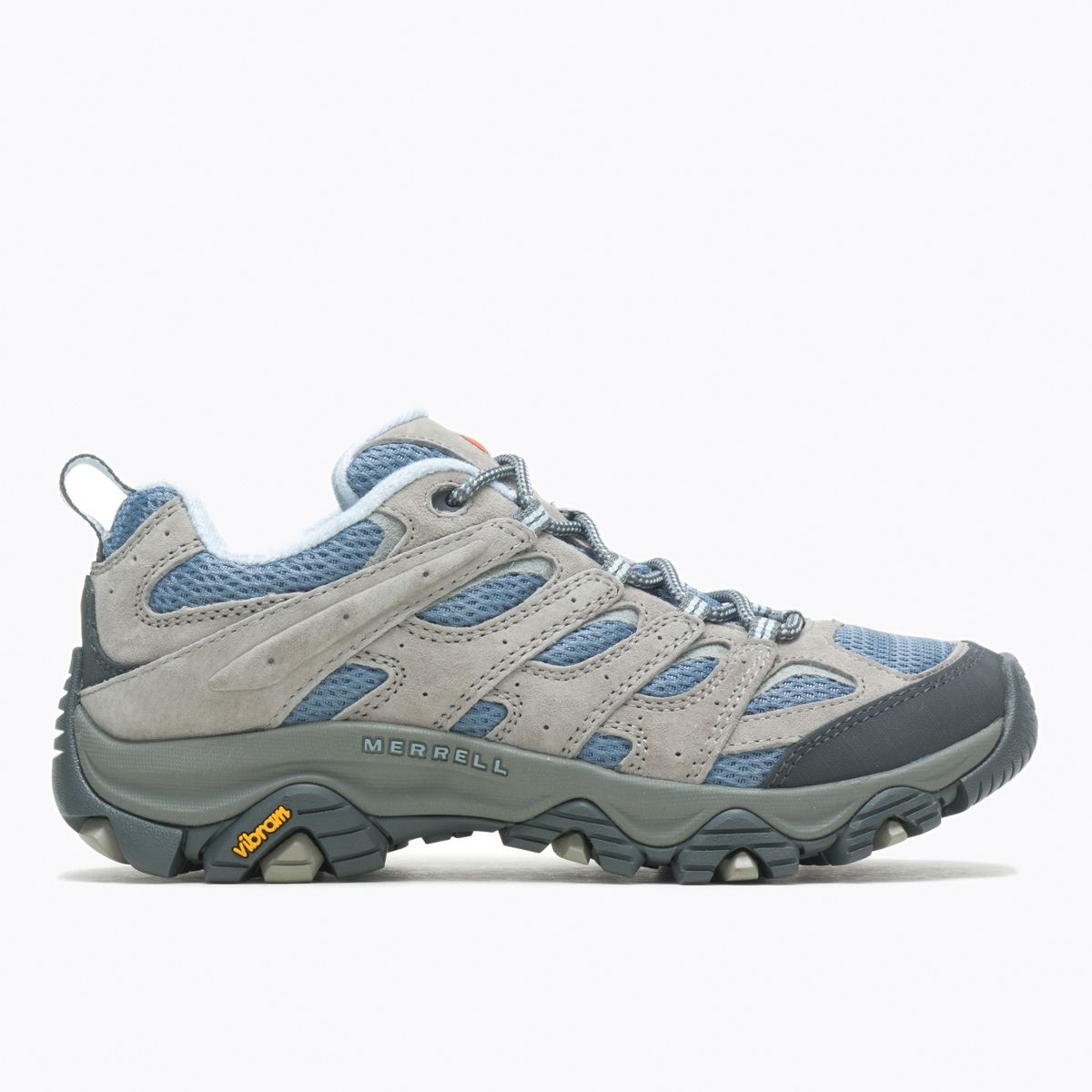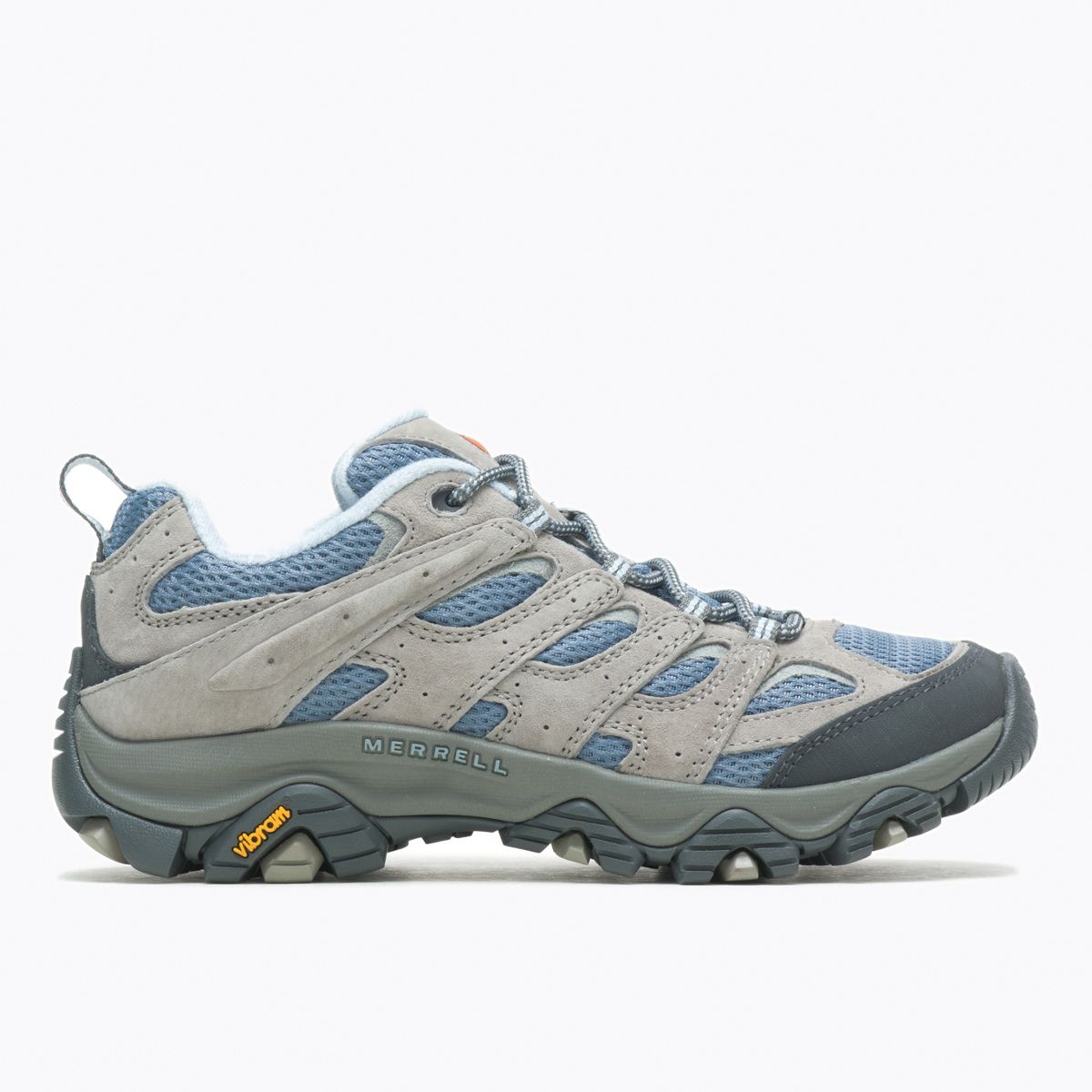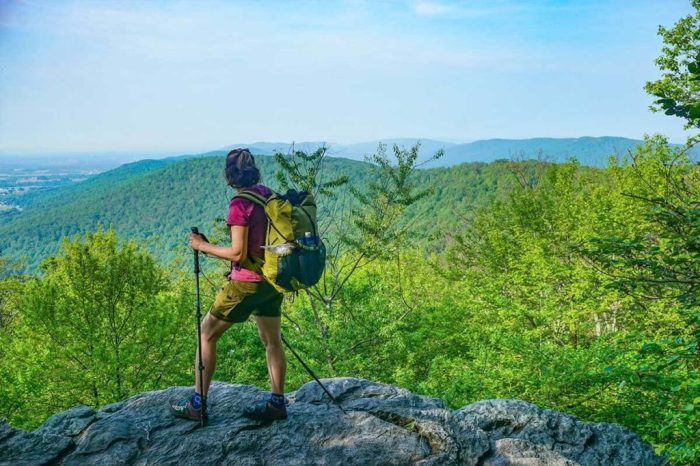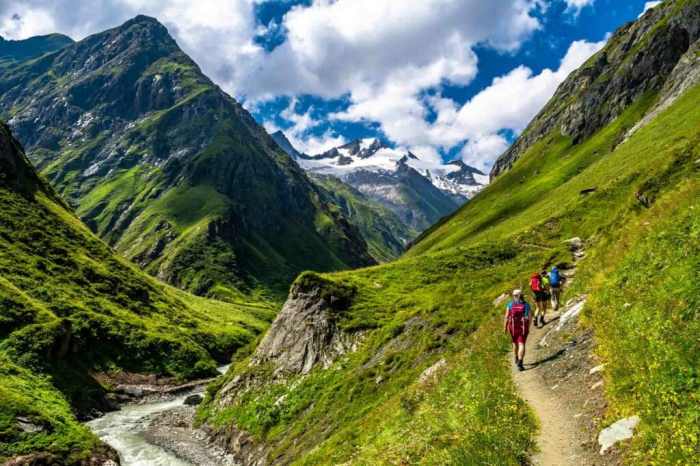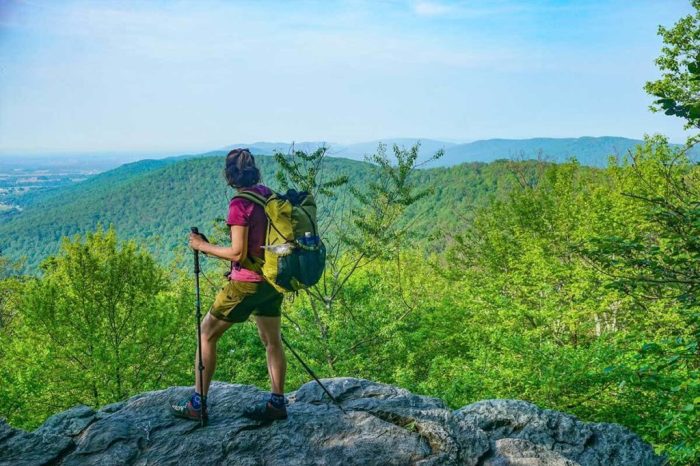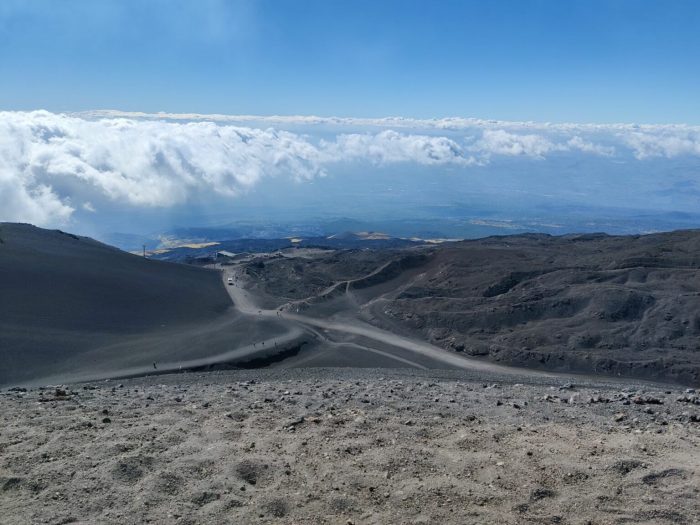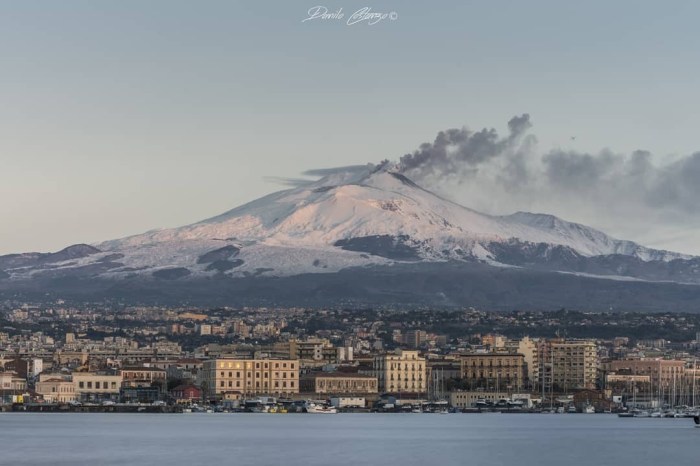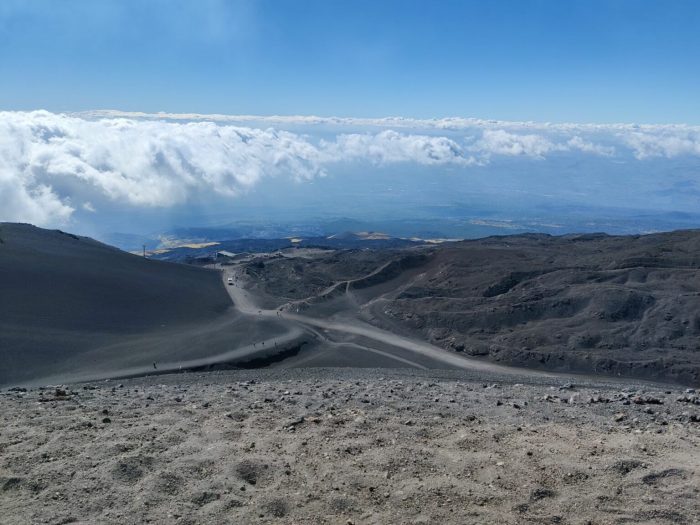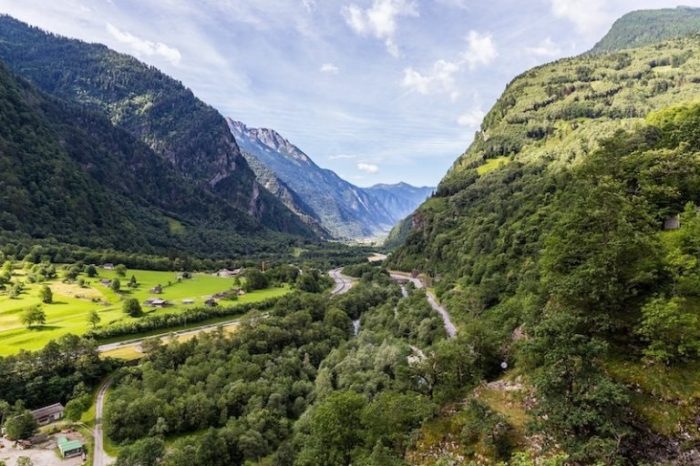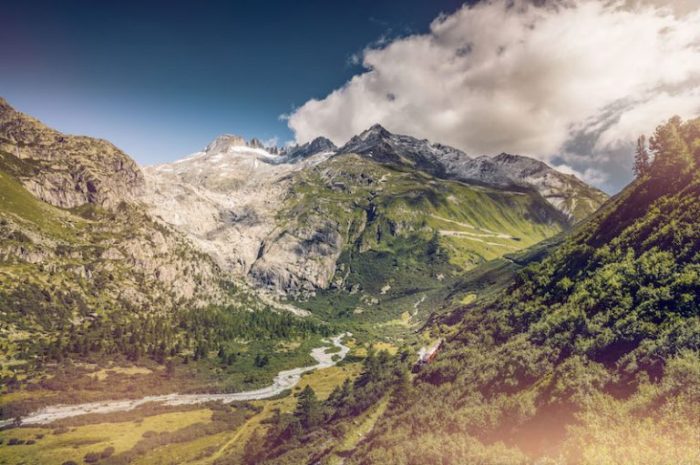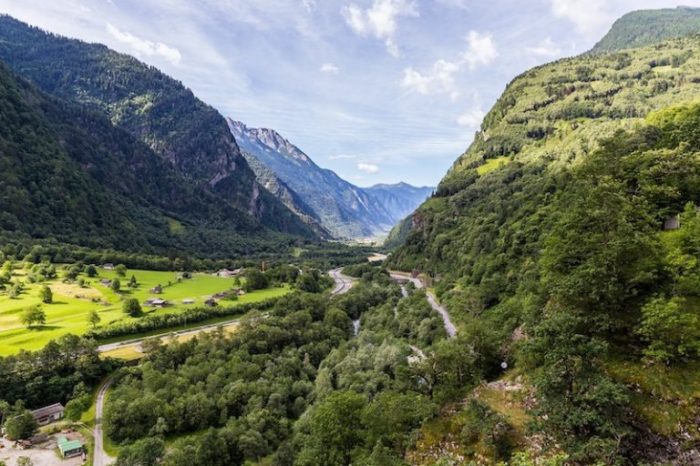Best hikes in Wales offer a breathtaking journey through diverse landscapes. From rugged mountains to picturesque coastal paths, Wales provides unforgettable hiking experiences for all levels. This guide explores the best trails, essential gear, accommodation, and local insights to help you plan your perfect Welsh adventure.
This guide dives deep into the heart of Welsh hiking, covering everything from beginner-friendly walks to challenging multi-day treks. We’ll uncover the hidden gems and popular favorites, sharing stories from hikers who’ve experienced the magic of these trails. Prepare to be inspired!
Introduction to Welsh Hiking
Wales, a land of dramatic peaks, lush valleys, and rugged coastlines, offers a hiker’s paradise. From the towering Snowdonia mountains to the dramatic Pembrokeshire Coast Path, the country boasts a diverse range of trails catering to all experience levels. This varied terrain allows for everything from short, scenic strolls to challenging multi-day expeditions.The history of hiking in Wales is deeply intertwined with the country’s natural beauty and cultural heritage.
Early walkers and explorers documented the landscape, paving the way for established trails and routes that continue to inspire adventurers today. Notable landmarks, like Snowdon, have long been popular destinations for hikers, drawing visitors from around the globe.
Types of Hiking Experiences
Wales provides a multitude of hiking experiences. Short walks allow for enjoying the stunning scenery without significant commitment, ideal for families and those with limited time. Multi-day treks offer the chance to immerse oneself in the wilderness, experiencing the raw beauty of the Welsh countryside. Coastal paths offer breathtaking views of the Irish Sea and dramatic cliffs.
These paths often combine stunning scenery with opportunities to spot wildlife.
Popular Hiking Regions and Trails
Wales’s hiking landscape is a tapestry of different regions, each with its own unique charm. Here’s a glimpse into some of the most popular areas:
| Region | Trail Name | Difficulty | Estimated Time |
|---|---|---|---|
| Snowdonia | Snowdon Round Trip | Moderate to Strenuous | 6-8 hours |
| Pembrokeshire Coast | Pembrokeshire Coast Path (sections) | Moderate | Variable (hours to days) |
| Brecon Beacons | Brecon Beacons National Park Trails | Easy to Strenuous | Variable (hours to days) |
| Anglesey | Anglesey Coastal Path | Moderate | Variable (hours to days) |
The table above provides a snapshot of some popular trails. The estimated times are approximate and can vary depending on individual pace and chosen route. Consider factors like weather conditions and personal fitness levels when planning your hike.
Popular Hiking Trails
Wales boasts a stunning array of hiking trails, catering to various experience levels. From challenging ascents to gentle rambles, the country offers a diverse range of landscapes, from rugged mountains to picturesque valleys. These trails are not only beautiful but also offer glimpses into Wales’ rich history and diverse wildlife. This section will delve into five of the most popular trails, highlighting their unique characteristics and appeal.
Top 5 Most Popular Hikes
These five hikes are consistently popular due to their combination of scenic beauty, manageable difficulty, and accessibility. Each trail provides a memorable experience, whether you’re an experienced hiker or a beginner.
Wales boasts some truly incredible hiking trails, offering stunning scenery and challenging routes for all levels. But if you’re looking for a change of pace, check out the recent reopening of Burney Falls Memorial State Park in California, Burney Falls Memorial State Park California reopen , which promises spectacular waterfalls and invigorating nature walks. Once you’ve explored those amazing trails, you can always return to the beautiful hiking spots in Wales for more adventure!
- Snowdonia National Park: This vast park is renowned for its dramatic peaks, including Snowdon, the highest mountain in Wales. The iconic trails offer breathtaking panoramic views of the surrounding valleys and mountains. The varied terrain, from grassy slopes to rocky ascents, provides a stimulating hike for all abilities.
- Brecon Beacons National Park: Famous for its rugged peaks and rolling hills, the Brecon Beacons offer a diverse range of trails. The park’s abundance of historical sites, like ancient castles and settlements, adds an extra layer of interest to the hikes. The varied landscapes and diverse wildlife provide a captivating experience for hikers.
- The Pembrokeshire Coast Path: This coastal path stretches along the stunning Pembrokeshire coastline, offering stunning views of the dramatic cliffs and the sparkling sea. The varied landscapes and frequent wildlife encounters, including seals and seabirds, add to the appeal. The coastal path is particularly popular for its picturesque charm and opportunities for coastal walks.
- The Cambrian Mountains: These mountains provide a challenging yet rewarding hiking experience. The numerous peaks and valleys offer a sense of adventure and exploration. The historical significance of the area, with its ancient settlements and stories of past civilizations, enhances the hiking experience.
- The Eryri National Park: Eryri, or the Snowdonia National Park, offers a range of hiking options, catering to different experience levels. The trails offer unique perspectives of the surrounding landscape and a glimpse into the region’s history.
Trail Features and Route Details
Each trail possesses distinct characteristics, including scenic viewpoints, wildlife encounters, and historical significance. These features enrich the hiking experience and make each trail unique.
- Snowdonia: The summit of Snowdon provides panoramic views of the surrounding valleys and mountains. The trails often cross streams and woodland, and wildlife encounters are common. Historical sites like the Snowdon Mountain Railway and the surrounding settlements add to the trail’s charm. The route usually involves ascending from the base, with varying degrees of difficulty depending on the chosen trailhead.
- Brecon Beacons: The peaks offer spectacular views of the surrounding landscape, and the valleys provide opportunities for wildlife spotting, such as birds and deer. The park’s history is woven into the landscape, with remnants of ancient castles and settlements scattered along the trails. Routes typically involve ascents and descents through varied terrain.
- Pembrokeshire Coast Path: The coastline offers stunning views of the sea and dramatic cliffs. The varied terrain, from rocky shores to grassy dunes, makes for a varied hiking experience. Seabirds and seals are frequently sighted along the path. The route is largely coastal, following the shoreline.
- Cambrian Mountains: The higher peaks offer breathtaking views. The mountains’ history is reflected in the presence of ancient settlements and historical sites. The trails often involve ascents and descents through diverse terrain. The route may vary depending on the chosen trail and the hiker’s chosen objective.
- Eryri: The varied landscape provides opportunities for diverse wildlife encounters. The trails often traverse areas with a rich history, highlighting ancient settlements and cultural heritage. Routes range from easy walks to challenging ascents to the highest peaks.
Trail Comparison Table
This table summarizes the key characteristics of the top 5 trails, including difficulty, length, and accessibility.
| Trail | Difficulty | Length (approx. miles) | Accessibility |
|---|---|---|---|
| Snowdonia | Moderate to Strenuous | Variable | Good |
| Brecon Beacons | Moderate to Strenuous | Variable | Good |
| Pembrokeshire Coast Path | Moderate | Variable | Excellent |
| Cambrian Mountains | Strenuous | Variable | Moderate |
| Eryri | Moderate to Strenuous | Variable | Good |
Hiking for Different Abilities
Wales boasts stunning landscapes perfect for all hiking levels, from leisurely strolls to challenging ascents. Understanding the varying difficulty levels is key to enjoying the trails and ensuring a safe and enjoyable experience. Choosing a trail appropriate for your fitness level is crucial to preventing disappointment and potential injury.Hiking ability is a significant factor in selecting the right trail.
A beginner’s trail will differ greatly from an advanced trail, and a family-friendly route might not be suitable for a seasoned hiker. This section explores the diverse hiking options available in Wales, catering to different fitness levels and preferences.
Beginner Trails
Beginner trails often feature gentle inclines, well-maintained paths, and minimal elevation gain. These trails are ideal for those new to hiking, families with young children, or individuals seeking a relaxed introduction to the outdoors. They provide a rewarding experience without overwhelming the hiker with strenuous exertion. A great example is the “Coastal Path” section near Tenby, offering scenic views and relatively flat terrain.
Intermediate Trails
Intermediate trails offer a step up in challenge, incorporating more elevation gain, varied terrain, and potentially some steeper inclines. These trails are suitable for those with a moderate level of fitness who enjoy a more substantial hike. A typical intermediate trail might include a few challenging sections but also allow for ample opportunities to enjoy the breathtaking Welsh scenery.
An example would be the climb up to Pen-y-Fan, a popular but manageable hike with rewarding views from the summit.
Advanced Trails
Advanced trails are designed for experienced hikers and climbers. These trails often feature significant elevation changes, rocky terrain, and potentially exposed sections. They demand a higher level of fitness and experience in navigating potentially challenging environments. The trails on Snowdon are a prime example of an advanced hike. These trails require careful preparation, appropriate gear, and a solid understanding of mountain safety protocols.
Wales boasts some incredible hiking trails, perfect for exploring stunning scenery. Planning a trip to explore the French countryside? Consider a France Special Pass for seamless travel. france special pass travel can be a game-changer for budgeting and planning, and that might inspire some new hiking adventures in Wales! The rugged peaks and lush valleys are waiting to be conquered.
Trails for Families with Young Children
Many trails in Wales are suitable for families with young children. Look for trails with gentle gradients, well-maintained paths, and plenty of opportunities to stop and enjoy the scenery. The trails around the Brecon Beacons National Park are often well-suited for families, with a variety of paths catering to different ages and abilities. These trails often offer picnic spots and playgrounds, making the experience more enjoyable for everyone.
Trail Difficulty Categorization
| Difficulty Level | Estimated Time (hrs) | Estimated Distance (miles) | Example Trails |
|---|---|---|---|
| Beginner | 2-4 | 3-8 | Coastal Path near Tenby, Some paths in the Brecon Beacons |
| Intermediate | 4-6 | 6-12 | Pen-y-Fan, Parts of the Cambrian Mountains |
| Advanced | 6+ | 12+ | Snowdon, Mounts in the Snowdonia National Park |
Choosing a trail that aligns with your abilities ensures a positive experience and prevents potential risks.
Essential Hiking Gear and Preparation

Embarking on a Welsh hike requires careful preparation, especially considering the unpredictable weather and varied terrain. This section details the essential gear and safety precautions crucial for a successful and enjoyable experience. Understanding the conditions and packing appropriately can significantly enhance your adventure.Proper gear and preparation are vital for a safe and fulfilling Welsh hiking experience. Knowing what to bring and how to prepare for various scenarios will ensure a smooth and enjoyable trek.
This includes understanding weather patterns, potential wildlife encounters, and the importance of packing appropriately.
Essential Hiking Boots
Choosing the right hiking boots is paramount for comfort and safety on Welsh trails. Well-fitting boots provide crucial ankle support, preventing injuries on uneven terrain. Look for waterproof, sturdy boots with good traction. Hiking boots should be broken in before a challenging hike to avoid blisters and discomfort. Properly fitting hiking boots are essential for maintaining balance and avoiding ankle sprains, particularly on uneven terrain.
Clothing for All Conditions
Welsh weather can change rapidly. Layers are key. A waterproof and windproof outer shell is crucial, paired with a mid-layer for warmth and an inner layer for moisture wicking. A hat, gloves, and scarf are also essential, especially in cooler temperatures or higher altitudes. Packing versatile clothing allows you to adapt to changing conditions throughout your hike.
Backpack Essentials
A well-chosen backpack is vital for carrying necessary gear. Consider the size and weight of your belongings, ensuring the backpack fits comfortably and distributes weight evenly. Proper hydration is critical; bring a sufficient water reservoir, and if needed, a hydration bladder. Food and snacks are also essential for maintaining energy levels. Choose a backpack that fits your body type and the length of your hike, ensuring comfort and ease of carrying.
Safety Precautions
Knowing how to react to potential hazards is essential for a safe hike. Inform someone of your hiking plans, including the route and estimated return time. Be aware of potential wildlife encounters, such as sheep or other animals, and maintain a safe distance. Be mindful of weather forecasts and adjust your plans if necessary. Always carry a map and compass or GPS device for navigation, particularly in less-traveled areas.
Weather Considerations
Welsh weather is famously unpredictable. Check the forecast before you set off and be prepared for sudden changes. Bring extra layers, a waterproof jacket, and appropriate footwear. Consider the time of year and elevation; higher altitudes and winter months can bring significantly colder temperatures. Be aware of potential risks such as strong winds, rain, or sudden storms.
Wildlife Encounters
Wales boasts diverse wildlife. Be aware of potential encounters with sheep, livestock, or other animals. Maintain a respectful distance and do not approach or feed wildlife. If you encounter an animal that appears aggressive, slowly back away and alert other hikers or park rangers. Understanding the local wildlife and their behaviors is crucial for minimizing the risk of unwanted interactions.
Essential Gear Checklist
| Gear Item | Description | Importance |
|---|---|---|
| Hiking boots | Waterproof, sturdy boots with good ankle support and traction | Crucial for ankle support, preventing injuries, and maintaining stability on uneven terrain. |
| Layers of clothing | Waterproof and windproof outer shell, mid-layer, inner layer, hat, gloves, and scarf | Essential for adapting to changing weather conditions. |
| Backpack | Appropriate size and weight capacity, ensuring comfort and even weight distribution | Crucial for carrying necessary gear, water, food, and first-aid supplies. |
| Water reservoir/hydration bladder | Sufficient capacity for hydration | Critical for maintaining hydration during the hike. |
| Food and snacks | Energy-rich snacks and meals | Vital for maintaining energy levels throughout the hike. |
| First-aid kit | Essential supplies for treating minor injuries | Crucial for dealing with minor injuries or emergencies. |
| Map and compass/GPS device | For navigation | Essential for finding your way back, especially in less-traveled areas. |
| Emergency whistle | For attracting attention in case of an emergency | Can be vital for signaling for help in an emergency situation. |
Accommodation and Amenities
Planning your Welsh hiking adventure goes beyond just choosing the trails. Finding suitable accommodation near your chosen hiking destinations is crucial for a comfortable and enjoyable experience. This section details the various options available, from campsites to cozy guesthouses, and highlights the amenities nearby, ensuring you have everything you need to make the most of your trip.
Popular Campsites and Accommodation Options
Many popular hiking trails in Wales boast a range of accommodation options, catering to different budgets and preferences. From bustling campsites offering a sense of community to cozy guesthouses providing a more intimate experience, there’s something for everyone. Campgrounds, often situated near scenic landscapes, are a great budget-friendly option for hikers. For those seeking more comfort and convenience, hotels and guesthouses provide comfortable rooms and often access to additional amenities like restaurants and bars.
Amenities Near Hiking Trails
The availability of amenities near hiking trails significantly impacts the overall experience. Pubs, restaurants, and shops offer opportunities to refuel, relax, and purchase essential supplies. The proximity of these amenities allows hikers to enjoy the convenience of grabbing a bite to eat, a refreshing drink, or replenishing their supplies without having to travel far. This can be particularly beneficial on longer hikes or during inclement weather.
The presence of these facilities adds another layer of enjoyment and practicality to the hiking experience.
Public Transport Options
Public transport in Wales provides a viable way to reach hiking destinations, especially for those not driving. Bus services connect various towns and villages, making it possible to access trails that might be further from larger towns or cities. For more remote locations, trains might be an option, offering a more scenic journey. In addition, walking and cycling paths are often available to connect trails and towns, providing an alternative way to travel.
Using public transport reduces reliance on private vehicles and promotes environmentally conscious travel.
Comparison of Accommodation Options
| Accommodation Type | Price (Estimated) | Location | Amenities |
|---|---|---|---|
| Campsite (e.g., Snowdonia National Park) | £20-40 per night (per tent) | Directly near trails, often in scenic locations | Toilets, showers, laundry facilities, sometimes with basic cooking facilities. |
| Guest House (e.g., near the Brecon Beacons) | £50-150 per night (per room) | Often situated in villages or towns near hiking trails | Private rooms, breakfast included, sometimes with common areas, and parking. |
| Hotel (e.g., near the Pembrokeshire Coast Path) | £80-200+ per night (per room) | Usually located in towns or villages, sometimes offering easy access to hiking trails | Comfortable rooms, restaurants, bars, and other hotel services. |
This table provides a basic comparison, and actual prices and amenities may vary depending on the specific location and time of year. It is recommended to check individual listings for the most up-to-date information.
Wildlife and Environmental Considerations
Wales’s stunning landscapes are home to a rich tapestry of wildlife, from majestic red deer to elusive birds of prey. Hiking in these areas offers a unique opportunity to witness this natural beauty, but responsible interaction is key. Understanding the local wildlife and respecting the environment is crucial for preserving this natural heritage for future generations.A mindful approach to hiking in Wales goes beyond simply enjoying the views.
It’s about understanding the delicate balance of the ecosystem and playing a part in its preservation. Respecting local flora and fauna, minimizing environmental impact, and adhering to safety guidelines are all essential components of responsible hiking.
Common Wildlife Encounters
A variety of wildlife inhabits Welsh trails. From the familiar to the more elusive, encountering these creatures adds to the hiking experience. Knowing how to react safely and respectfully is important for both the wildlife and the hiker.
- Red deer: These majestic animals are frequently sighted in upland areas. Keep a safe distance, and avoid approaching them. Allow them space to graze undisturbed. Never feed them.
- Birds of prey: Hawks, eagles, and owls are common throughout Wales. Observe them from a distance, and refrain from disturbing their nesting sites or hunting grounds.
- Badgers: These nocturnal creatures are found in various habitats. Avoid disturbing their settlings or leaving food that might attract them.
- Small mammals: Hedgehogs, foxes, and various rodents are also present. Respect their space and avoid interfering with their natural behaviors.
Environmental Considerations for Responsible Hiking
Respecting the environment is paramount to ensure the sustainability of hiking experiences in Wales. Practicing responsible waste disposal and minimizing environmental impact are crucial for protecting the delicate ecosystems.
- Waste Disposal: Pack out everything you pack in. Dispose of trash properly in designated bins or carry it out to designated waste disposal areas. Never leave any waste behind. This is essential to prevent pollution and maintain the natural beauty of the trails.
- Respecting Nature: Stay on marked trails to prevent damage to vegetation. Avoid disturbing or collecting wildflowers, plants, or fungi. Respect the natural beauty and avoid creating unnecessary footprints or disturbances.
- Minimizing Impact: Be mindful of your water usage, especially in remote areas. Minimize your campfire’s impact by using existing fire rings, ensuring the fire is fully extinguished before leaving. Pack out any ashes and charcoal to avoid contributing to wildfires or pollution.
Respecting Local Flora and Fauna
Wales boasts a diverse range of plant and animal life, and respecting these species is vital for the ecological balance. Recognizing the importance of preserving the natural environment is crucial.
- Conservation Efforts: Wales has a strong history of conservation efforts in its hiking areas. These efforts include protecting designated habitats and educating the public on responsible behavior. Conservation organizations play a significant role in protecting and restoring habitats.
- Importance of Preserving Habitats: Preserving natural habitats is crucial for maintaining biodiversity. This includes protecting areas of high ecological importance, such as wetlands and forests. Many areas feature designated wildlife sanctuaries, which are protected for their natural beauty and the species that inhabit them.
Examples of Conservation Efforts
Several initiatives exist to protect and enhance Welsh hiking areas. Examples demonstrate the commitment to preserving natural resources.
- National Parks and Areas of Outstanding Natural Beauty: Wales’s national parks and areas of outstanding natural beauty are actively managed to protect biodiversity. These areas are meticulously monitored and regulated to ensure ecological balance.
- Wildlife Monitoring and Research: Ongoing monitoring and research projects contribute to a deeper understanding of wildlife populations. This knowledge is vital for effective conservation strategies.
Inspirational Stories and Experiences
Wales’s mountains, valleys, and coastal paths offer more than just stunning scenery; they weave narratives of resilience, wonder, and connection with nature. These trails are pathways to personal growth, providing opportunities for introspection and profound experiences. Hikers often report a sense of profound peace and exhilaration as they traverse these landscapes.The stories shared by those who have walked these trails are testaments to the transformative power of Welsh hiking.
From the awe-inspiring views of Snowdonia’s peaks to the tranquil solitude of a secluded coastal path, each hike can become a unique and unforgettable adventure. These experiences often leave lasting impressions on the soul.
Unforgettable Moments on Welsh Trails
The sheer beauty of Wales is a significant factor in creating unforgettable moments. Sunrises painting the peaks in fiery hues, the sound of rushing waterfalls echoing through the valleys, or the quiet solitude of a mountain summit – these are just a few examples of the breathtaking sights and sounds that can be encountered. Many hikers report feeling a sense of profound connection to nature during their hikes.
A shared experience with fellow hikers, a sudden burst of wildflowers along a path, or a moment of reflection in a remote spot can become deeply meaningful memories.
Wales boasts some incredible hiking trails, perfect for a fall getaway. Looking for some witty fall Instagram captions to accompany your adventures? Check out some awesome trip ideas for fall vacations at trip ideas fall vacations witty fall instagram for inspiration. From the dramatic peaks of Snowdonia to the charming coastal paths, Wales offers breathtaking scenery that’s ideal for capturing stunning fall photos.
Just remember to pack layers and be prepared for unpredictable weather!
Tips for Creating Lasting Memories
Capturing these moments is crucial for preserving the memories. Carry a small journal to record observations, feelings, and reflections. Take photos, but also take time to truly experience the surroundings without the lens. Engage with nature actively; identify plants and birds, or simply listen to the sounds of the wind. Sharing these experiences with loved ones can make the memories even more special.
Embrace the unexpected detours; they often lead to the most rewarding discoveries.
Inspirational Quotes from Welsh Hikers
- “The air in Wales is different. It whispers tales of ancient stories and whispers promises of serenity. Every step on these trails is a journey into the heart of myself.”
- “The views from the summit were beyond description. It was as if the world was laid out before me, a tapestry woven with nature’s finest threads.”
- “The challenges of the trail were met with an unexpected joy. Each step forward felt like a victory, a testament to the power of human spirit and the beauty of the natural world.”
- “The solitude of the mountains was profoundly moving. I felt a deep sense of peace and clarity, as if the world outside was fading away and I was connected to something larger than myself.”
- “I never knew a walk in the hills could be so inspiring. The landscape of Wales sculpted my soul, and I came back from my hike feeling reborn.”
Seasonal Variations and Considerations: Best Hikes In Wales
Wales’s stunning landscapes transform with the seasons, offering unique hiking experiences at different times of year. Understanding these seasonal shifts is crucial for planning a safe and enjoyable trek, from the vibrant greens of spring to the crisp, colourful displays of autumn. Knowing the weather patterns and potential challenges associated with each season allows hikers to choose the optimal time for their chosen trails.The weather in Wales can be unpredictable, and hikers need to be prepared for changing conditions.
Rainfall, temperature fluctuations, and even the risk of snow are factors that can affect hiking enjoyment and safety. Understanding the typical weather patterns for each season in specific regions is essential for selecting the right time to visit and the appropriate gear.
Best Times to Hike in Different Regions
Wales boasts diverse landscapes, each with its own optimal hiking seasons. The best time to hike in Snowdonia, for example, is generally spring or autumn, when the weather is milder and the crowds are smaller. Summer can be exceptionally popular and bring higher temperatures. Coastal areas, like Pembrokeshire, might offer pleasant hikes in spring or autumn, while the summer can bring intense heat and high winds.
The valleys, like the Brecon Beacons, provide stunning hikes throughout the year, but with winter bringing a risk of ice and snow.
Unique Experiences Associated with Different Seasons, Best hikes in wales
Spring offers vibrant wildflowers and newly-greened landscapes, creating a spectacular backdrop for hiking. Autumn paints the mountainsides with a spectrum of colours, offering a picturesque panorama of changing foliage. Winter presents a different challenge, with the possibility of encountering snow-covered trails and frozen landscapes, creating a unique and serene ambiance. Each season presents its own charm, making the experience truly memorable.
Adapting to Changing Weather Conditions
Hiking in Wales requires adaptability, particularly in the face of changing weather. Layering clothing is paramount, allowing you to adjust to temperature shifts. A waterproof jacket and trousers are essential, even on seemingly sunny days. Checking weather forecasts before and during your hike is crucial. Recognizing signs of potential weather changes, like increasing cloud cover or shifting wind patterns, is important to adjust your plans accordingly.
Always carry a first-aid kit, appropriate footwear, and emergency supplies, especially in remote areas. Hiking in Wales, like any outdoor activity, necessitates respecting the environment and the elements. By adapting to the weather conditions and being prepared, hikers can enjoy the beauty of Wales throughout the year.
Seasonal Gear Considerations
Proper gear is crucial for hiking in any season. Spring and autumn might require mid-layer clothing, while winter hiking calls for waterproof clothing, thermal layers, and sturdy footwear with good grip. Summer hiking may necessitate lightweight, breathable clothing, a hat, sunglasses, and sunscreen. A comprehensive checklist for each season should be created to ensure that you are well-prepared for any weather.
Planning ahead is key to a safe and comfortable hike.
Local Culture and Customs

Wales boasts a rich tapestry of culture, deeply intertwined with its stunning landscapes. Hiking, a beloved pastime, is woven into this cultural fabric. Respecting local customs and traditions is crucial for a positive and enriching experience. Understanding the nuances of Welsh hiking culture allows for a more profound connection with the environment and the people who call it home.
Respecting Local Traditions
Welsh culture, especially in rural areas, places a high value on respect for the environment and local traditions. This often manifests in mindful hiking practices. Leave no trace is a mantra deeply ingrained in the local community, and it’s important to adhere to this principle. Carrying out your trash, avoiding disturbing wildlife, and staying on designated trails are essential components of respecting the natural heritage and local communities.
Furthermore, it is crucial to be mindful of local property boundaries and avoid trespassing.
Integrating into the Local Hiking Community
Engaging with the local hiking community fosters a richer understanding of the area and its people. Attending local walking groups or events is an excellent way to meet fellow hikers and learn about popular trails and hidden gems. Participating in these groups often involves shared experiences, from discussing the best spots for spotting wildlife to sharing tips for navigating challenging terrain.
Engaging in respectful conversation and listening attentively to the perspectives of others enhances the overall hiking experience.
Local Festivals and Events
Many Welsh festivals and events coincide with popular hiking seasons. The annual Eisteddfod, a celebration of Welsh culture, often includes hiking competitions or guided walks. Local fairs and markets might also coincide with autumn or spring hiking trips, providing an opportunity to connect with the community and discover unique local crafts or foods. These events are a wonderful way to immerse yourself in Welsh culture while enjoying the outdoors.
Conclusive Thoughts
Embarking on a Welsh hiking adventure is more than just a trip; it’s an immersion into the stunning natural beauty and rich culture of Wales. Whether you’re a seasoned hiker or a complete novice, this guide equips you with the knowledge and inspiration to find the perfect trails to create unforgettable memories. From scenic viewpoints to wildlife encounters, Wales awaits!

